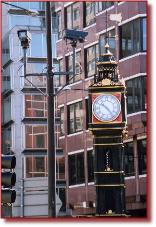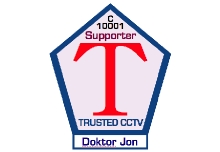 |
||
 |
||
![]()
![]()
![]()
![]()
![]()
![]()
![]()
![]()
![]()
![]()
![]()
![]()
![]()
![]()
![]()
![]()
![]()
![]()
![]()
![]()
![]()
![]()
![]()
![]()
![]()
![]()
![]()
![]()
![]()
![]()
![]()
![]()
![]()
![]()
![]()
![]()
![]()
![]()
![]()
IMPORTANT: No material may be reproduced, copied or redistributed from this site, without the express written consent of doktorjon.co.uk
All the detailed information on this site is provided in good faith; and as such, Doktor Jon does not accept responsibility for any consequential loss, injury or disadvantage resulting from any individual or organisation acting on the details contained herein.
© doktorjon.com 2004 - 2012
![]()
![]()
![]()
![]()
![]()
![]()
![]()
![]()
![]()
![]()
![]()
![]()
![]()
![]()
![]()
![]()
![]()
![]()
![]()
![]()
![]()
![]()
![]()
![]()
![]()
![]()
![]()
![]()
Please Note - Doktor Jon is currently upgrading his site, so you may see some layout changes on various pages, whilst the work is in progress.
Hopefully, the complete re-design and improvements, should be completed during 2012.
Having looked at the general requirements for evaluating the CCTV cameras, we now have to consider the Monitoring & Display Systems, and the Recording equipment.
Monitoring and Display Equipment
In practice, the actual CCTV display system may have a number of additional pieces of equipment incorporated, such as a Video Switcher, a Picture in Picture (PIP) unit, a ‘Quad’ display unit, a Display Multiplexer that splits the screen up into lots of smaller images, and any one of these can variously affect the overall picture quality coming from the camera.
For the purposes of carrying out a basic evaluation, the following factors will need to be reviewed, and a qualitative judgement made of the actual performance:-
MONITOR FUNCTIONALITY
Considering the overall units construction and how it's being used in a specific environment, so for example, whether it's a CRT / LCD / LED / Plasma / Projection System, a number of factors need to be considered apart from the obvious.
Physical size and suitability for the purpose, viewing angle, picture clarity under varying lighting conditions, heat generation, energy requirements etc. all need to be considered both in terms of functionality, ergonomic and 'health and safety' concerns, and increasingly energy efficiency, particularly with regard to larger CCTV Control Rooms.
PICTURE QUALITY
This can be recorded on the TRUSTED check sheets, to take account of a whole range of factors including:-
The overall sharpness of the picture (resolution), Colour Reproduction, Brightness and Contrast, as well as more technical issues, such as picture Format, Noise levels, Stability, Linearity (a bit heavy so we'll save that for later), and various Interference problems which can seriously degrade the image. Some aspects of this part of the evaluation will also need to take account of the signal transmission system, which is itself covered in another part of the TRUSTED assessment.
CAPTION DISPLAYS
It's quite common to have various bits of data displayed on the screen, including Time and Date displays (which must be accurate at all times), a logo or caption information, all of which should be confined to a secondary portion of the screen, with small legible characters that do not overlay the key recognition area on the screen, and which do not in any way interefere with the overall quality of the display image.
It's also important to ensure that unwanted data captions are turned off, so for example, if you're not using any external 'alarm' functions, it's best to turn off the alarm indicator on screen, as this along with other superfluous displays could mask vital information in the picture.

How can you tell if your
Video Surveillance System
is 'TRUSTED'©
Whilst the "TRUSTED"© campaign is about raising awareness of how to improve the quality of images and recordings, it is vitally important that CCTV users have a relatively simple way of measuring their systems effectiveness, for identifying and recording defined targets.





